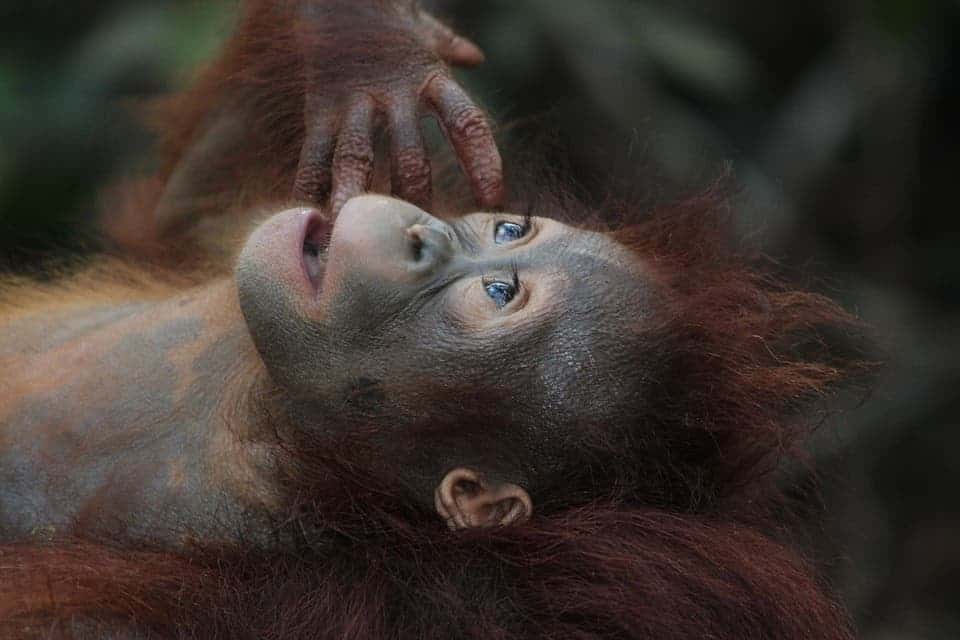Old World monkeys can use sentences — but only two words long.

New research from MIT reports that Old World monkeys can combine two vocalizations into a single sentence. However, they’re unable to freely recombine language elements as we do.
Pyow-hack
“It’s not the human system,” says Shigeru Miyagawa, an MIT linguist and co-author of a new paper detailing the study’s findings. “The two systems are fundamentally different.”
Along with Esther Clarke, an expert in primate vocalization, who is a member of the Behavior, Ecology, and Evolution Research (BEER) Center at Durham University in the U.K., Miyagawa re-evaluated recordings of Old World monkeys, including baboons, macaques, and the proboscis monkey.
The language of some of these species has been studied in the past, and different species have different kinds of alarm calls for each type of predator. Vervet monkeys have specific calls when they see leopards, eagles, and snakes, for example, because each predator requires different kinds of evasive action. Similarly, tamarin monkeys have one alarm call to warn of aerial predators and one to warn of ground-based predators.
These primates seem able to combine such calls to create a more complex message. The putty-nosed monkey of West Africa has a general alarm call that sounds like “pyow,” and a specific alarm call warning of eagles, “hack.” However, sometimes they will use “pyow-hack” in longer or shorter sequences to warn the group that danger is imminent.
In the paper, Miyagawa and Clarke contend that the monkeys’ ability to combine these terms means they are merely deploying a “dual-compartment frame” which lacks the capacity for greater complexity. The findings, the authors explain, showcase an important difference in cognitive ability between humans and some of our closest relatives.
They explain that these combined calls always start with “pyow”, end with “hack” and that the terms are never alternated. Although the animals do vary the length of the call, the authors say that their language lacks a “combinatorial operation” (the process that allows our brains to arrange individual words into functional sentences). It is only the length of the “pyow-hack” sequence that indicates how far the monkeys will run.
“The putty-nose monkey’s expression is complex, but the important thing is the overall length, which predicts behavior and predicts how far they travel,” Miyagawa says. “They start with ‘pyow’ and end up with ‘hack.’ They never go back to ‘pyow.’ Never.”
Campbell’s monkey, a species in South Africa, uses calls that are reminiscent of a human-style combination of sounds,the team explains that they also use a two-item system and add an “-oo” sound to turn specific sounds into generalized aerial or land alarms.
Miyagawa also notes that when the Old World monkeys speak, they seem to use a part of the brain known as the frontal operculum. Human language is heavily associated with Broca’s area, a part of the brain that seems to support more complex operations. The authors propose that humans’ ability to tap Broca’s area for language may be what enabled speech as we know it today.
“It seems like a huge leap,” Miyagawa says. “But it may have been a tiny [physiological] change that turned into this huge leap.
The paper “Systems Underlying Human and Old World Monkey Communication: One, Two, or Infinite” has been published in the journal Frontiers in Psychology.



